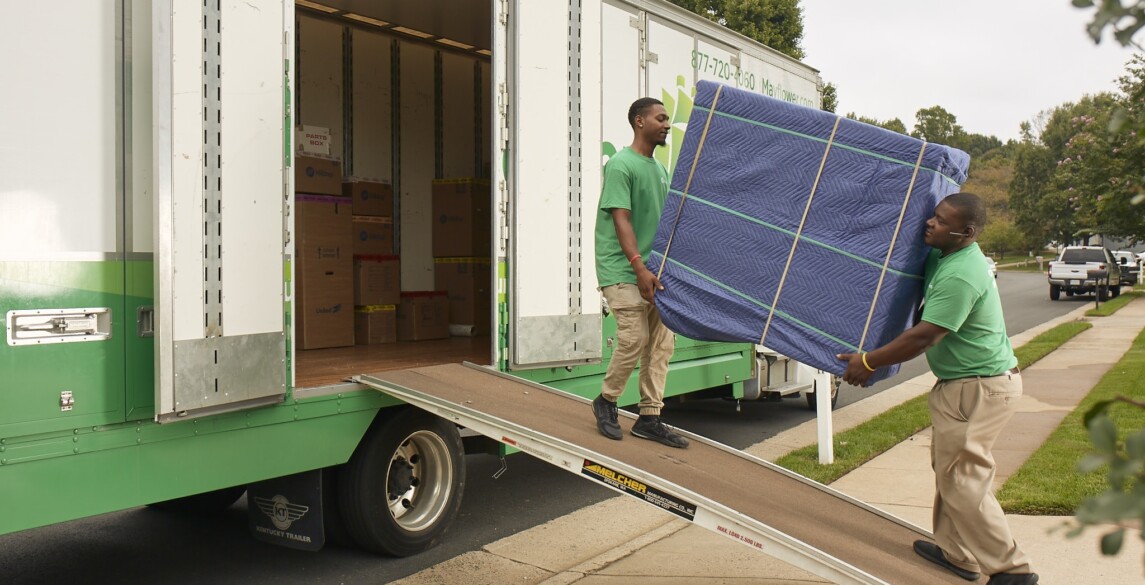What’s the difference between moving insurance and valuation coverage – and how much do you need?
You may be thinking, “What kind of insurance do I need for a moving company?” It’s understandable. Even if you’re using a … Continued

You may be thinking, “What kind of insurance do I need for a moving company?” It’s understandable. Even if you’re using a professional moving company, you still want some protection toward your belongings’ value should something be damaged during the move process. But as anyone who’s moved before knows, there are a lot of decisions to make. Depending on the breadth and depth of your to-do list, it can be tempting to check off everything as quickly as possible.
Certain things, like updating your mailing address with your bank and utilities, are fine to breeze through, but it’s important to carefully consider what type of protection you need for your belongings. But first, do you need moving insurance or valuation coverage to protect your move?
Moving insurance is not the same as valuation coverage
These might sound synonymous, but they are two entirely different options. The simplest way to distinguish them is that house moving insurance is provided by an insurance company – not your mover. Instead, moving companies provide valuation coverage, which is offered at various levels based on your needs. If you feel like you need additional coverage beyond what your mover provides, call your insurance company to see what they offer. If you go this route, ask specifically when your items will be covered as many policies do not apply while your belongings are in transit.
What is valuation coverage?
The valuation option you select determines the basis for your claim, how it will be settled and establishes how much you will be reimbursed, should there be a claim. The liability for loss or damage is based upon applicable tariffs, as well as federal laws and regulations, and has certain limitations and exclusions.
There are three different valuation options from which to choose:
- Released Rate Liability – Basic Coverage
With this type of valuation, the maximum liability for loss or damage to any of your belongings is 60 cents multiplied by the weight of the article. This is the basic liability level and is provided at no charge to you and is applicable to all types and sizes of moves. - Full-Value Coverage
Under this protection plan, if your articles are lost or damaged while in a mover’s care, they will either be repaired or replaced with like items, or a cash settlement will be made for the current market replacement value, regardless of the age of the item. Valuation coverage level for full value protection is determined by using $6 per pound of the estimated weight of your shipment with a $0 deductible. So, if your estimated shipment weighs 4,000 lbs., your coverage is $24,000. - Items of “Extraordinary Value”
“Articles of extraordinary value” refers to items having a value of more than $100 per pound. All “articles of extraordinary value” in your shipment must be listed on the High-Value Inventory form that you’ll receive at the beginning of your move. Following is a partial list to help you identify items that might fall under this classification: furs, art collections, crystal, figurines, antiques, Oriental rugs, china and silverware.
What type of valuation coverage is best for you?
Now that you know the difference between moving insurance and valuation coverage, along with the different valuation options, what amount of coverage do you need? Again, all moving companies offer basic coverage at $0.60 per pound of the article in question; however, the default is full-value coverage. This gives you the most protection and assurance that should something happen, you will be fully reimbursed for the damages. Should you choose the basic coverage, you will need to select and initial that option on your paperwork.
Whichever option you select, it’s important that you identify a mover with a strong reputation for providing seamless, successful moves to help minimize the likelihood of needing to file a claim.
Make sure everything is OK before the moving crew leaves
It’s important to know that your mover is no longer liable for any damages once they leave after unloading everything at your new home. Because of this, you must inspect your belongings as they are unloaded while the moving crew is still there.
We strongly recommend taking the following steps before your movers leave:
- Make sure that there is no damage to the residence at both your departing and destination homes.
- Perform an inventory check-off to ensure that all items were delivered.
- If there are missing or damaged items, note on the paperwork prior to the crew’s or driver’s departure.
Noting any issues before the crew leaves helps establish that the problem did not occur while your belongings were solely in your care. If anyone on the crew tries to rush you through this process, call your move coordinator to report the issue.
How long do you have to file a claim?
The amount of time you have to file a claim depends on your move type. If you had an interstate move (i.e., where you crossed state lines), you have up to nine months to file a claim. If your move stayed within state lines, then the amount of time you have to file a claim depends on your state’s specific laws. Again, ask your move coordinator for the specifics and deadlines for your move.
In addition to letting professionals handle everything, one of the benefits of hiring reputable movers is the added level of valuation coverage they provide. Given your budget and risk tolerance, there are a variety of coverage options from which you can choose. If you need help determining what’s best for you and your upcoming move, we’d love to answer questions you may have!


